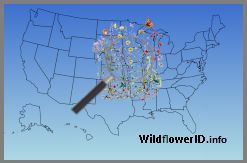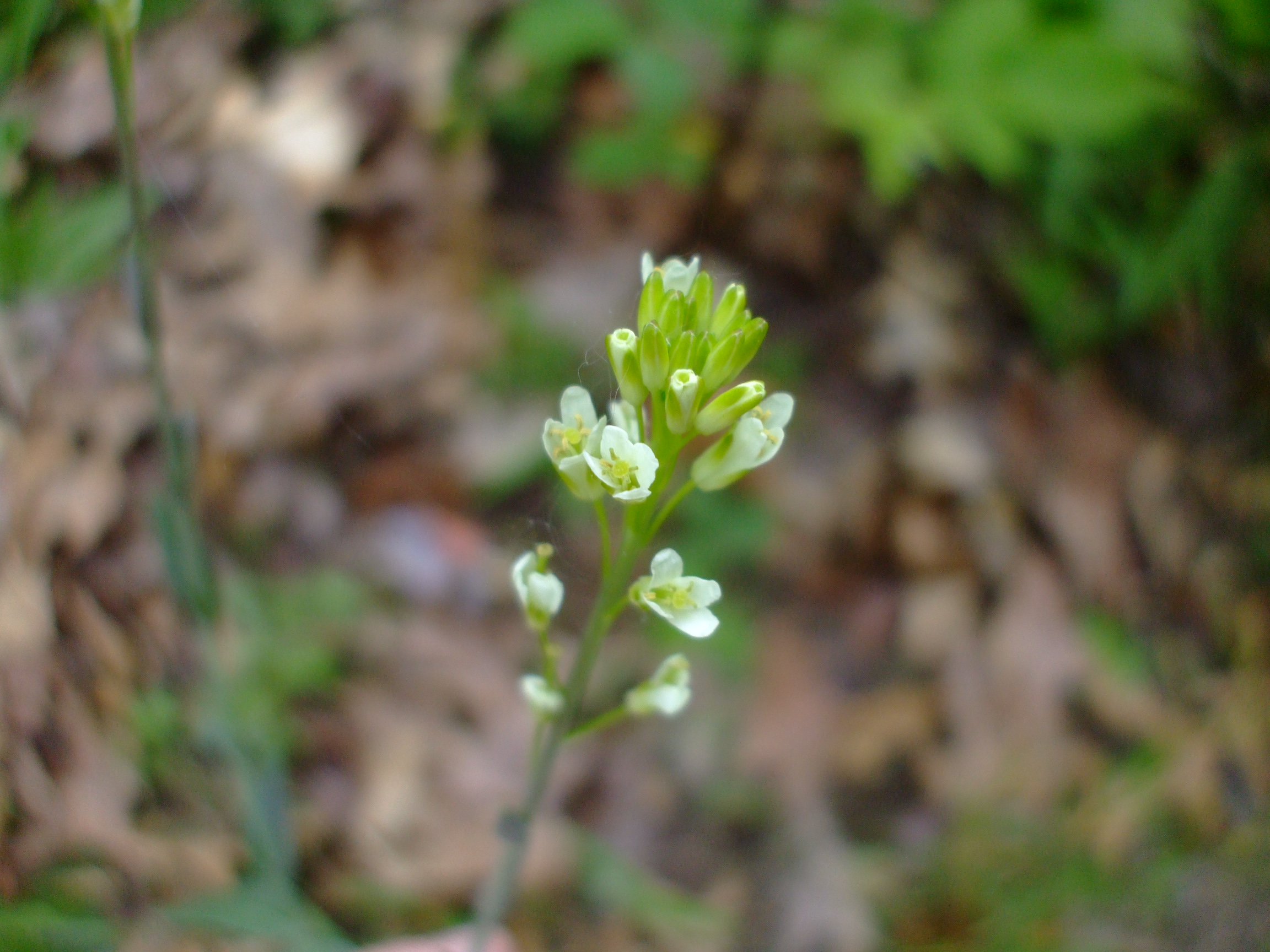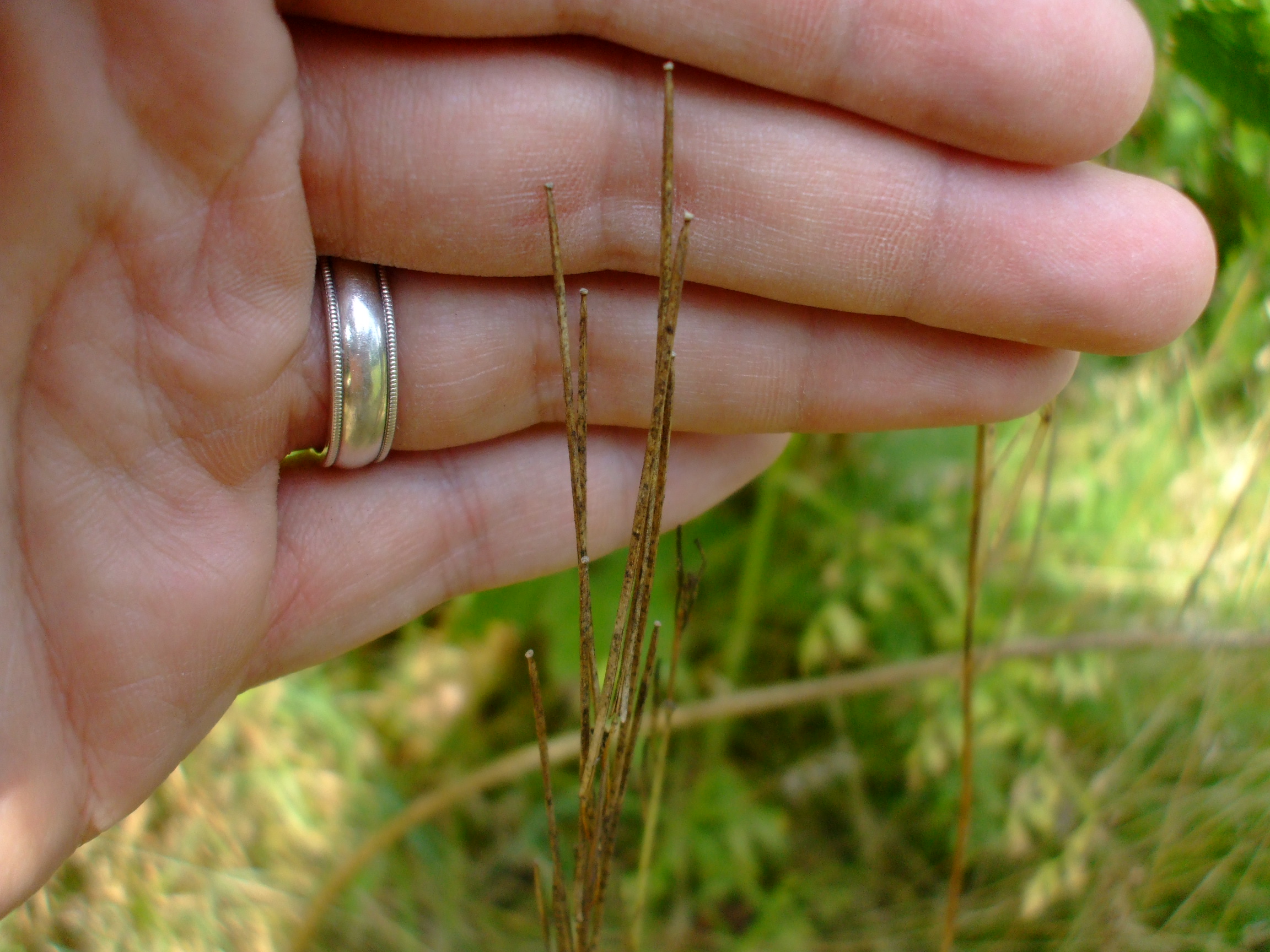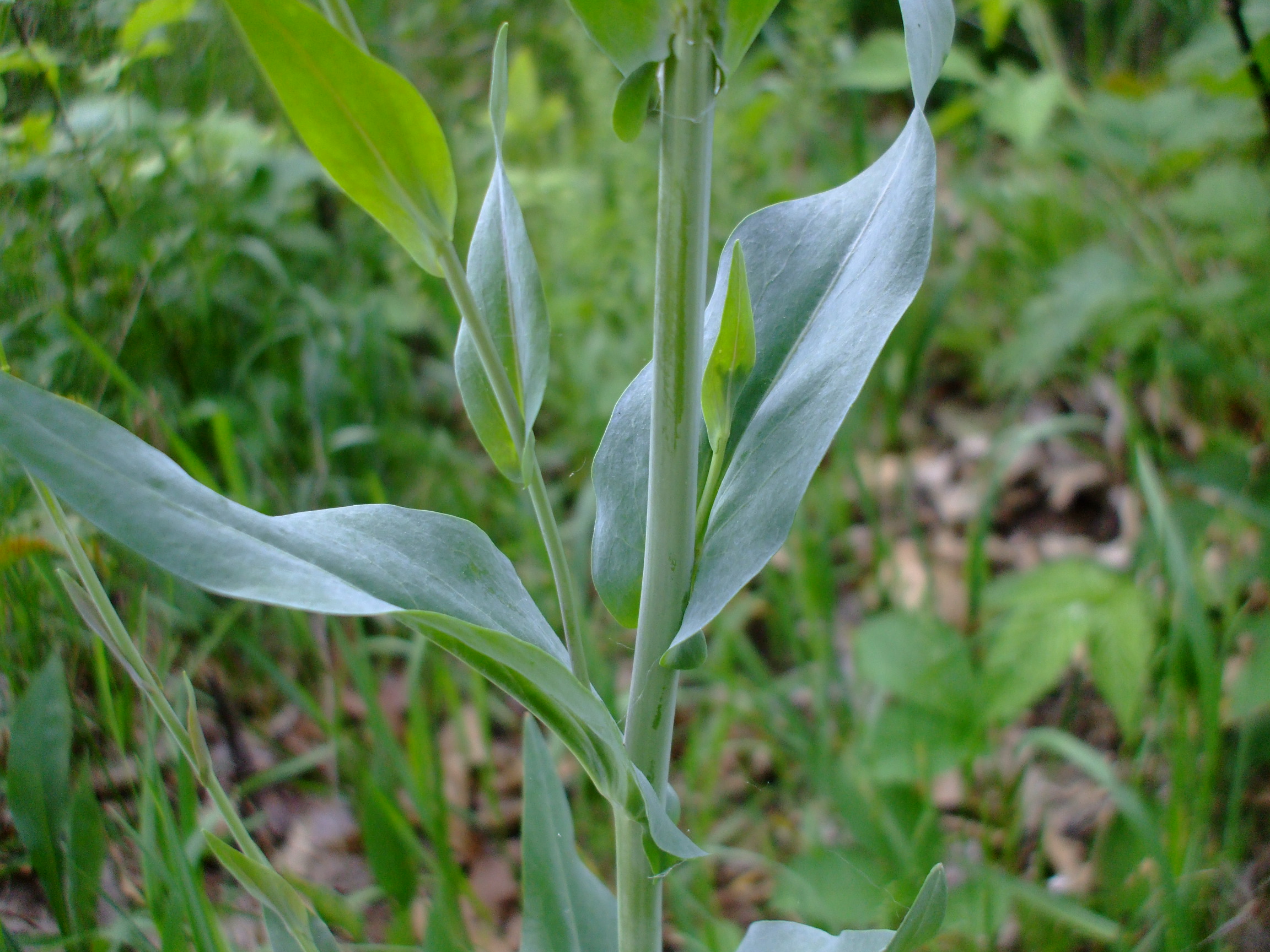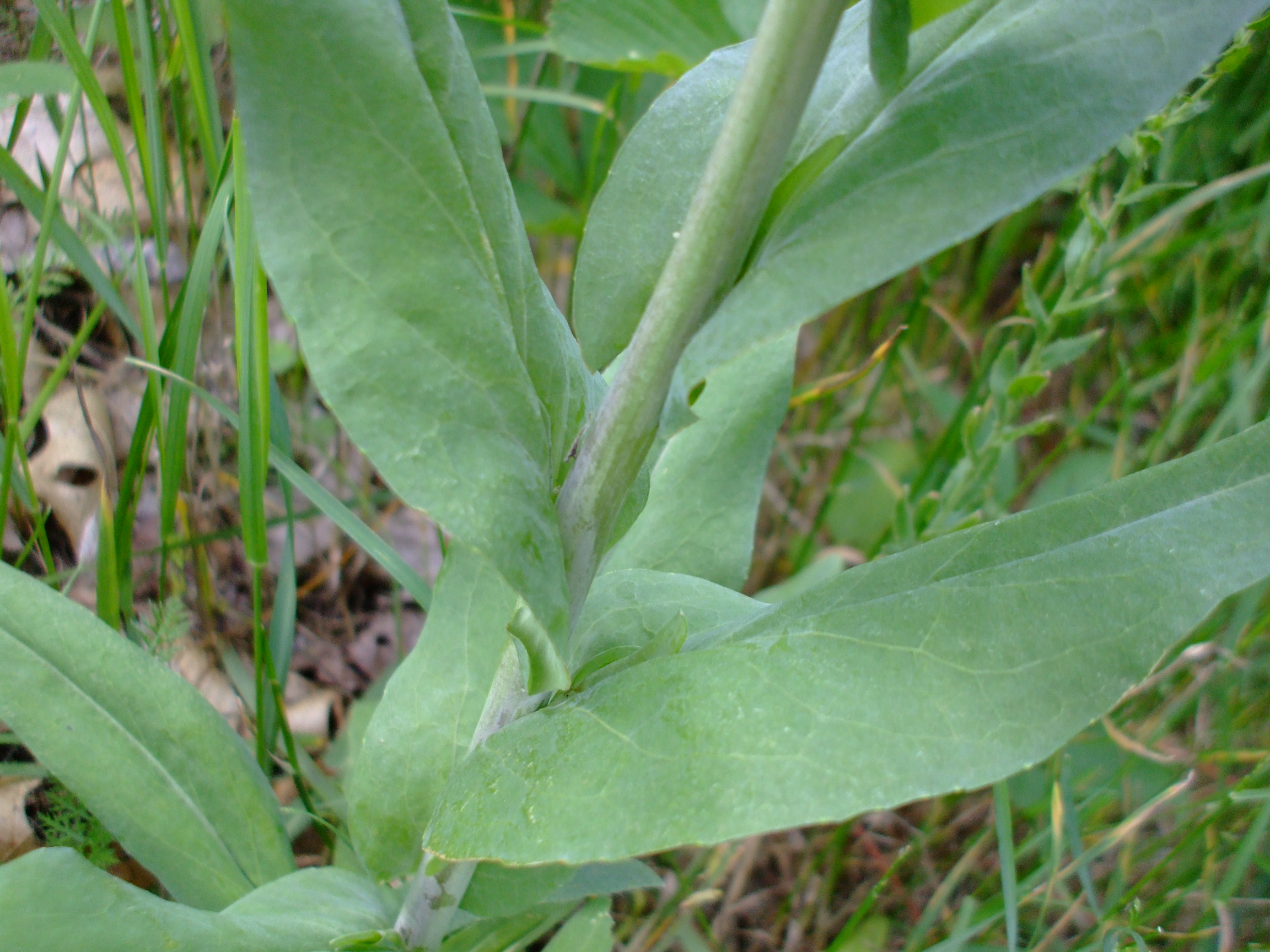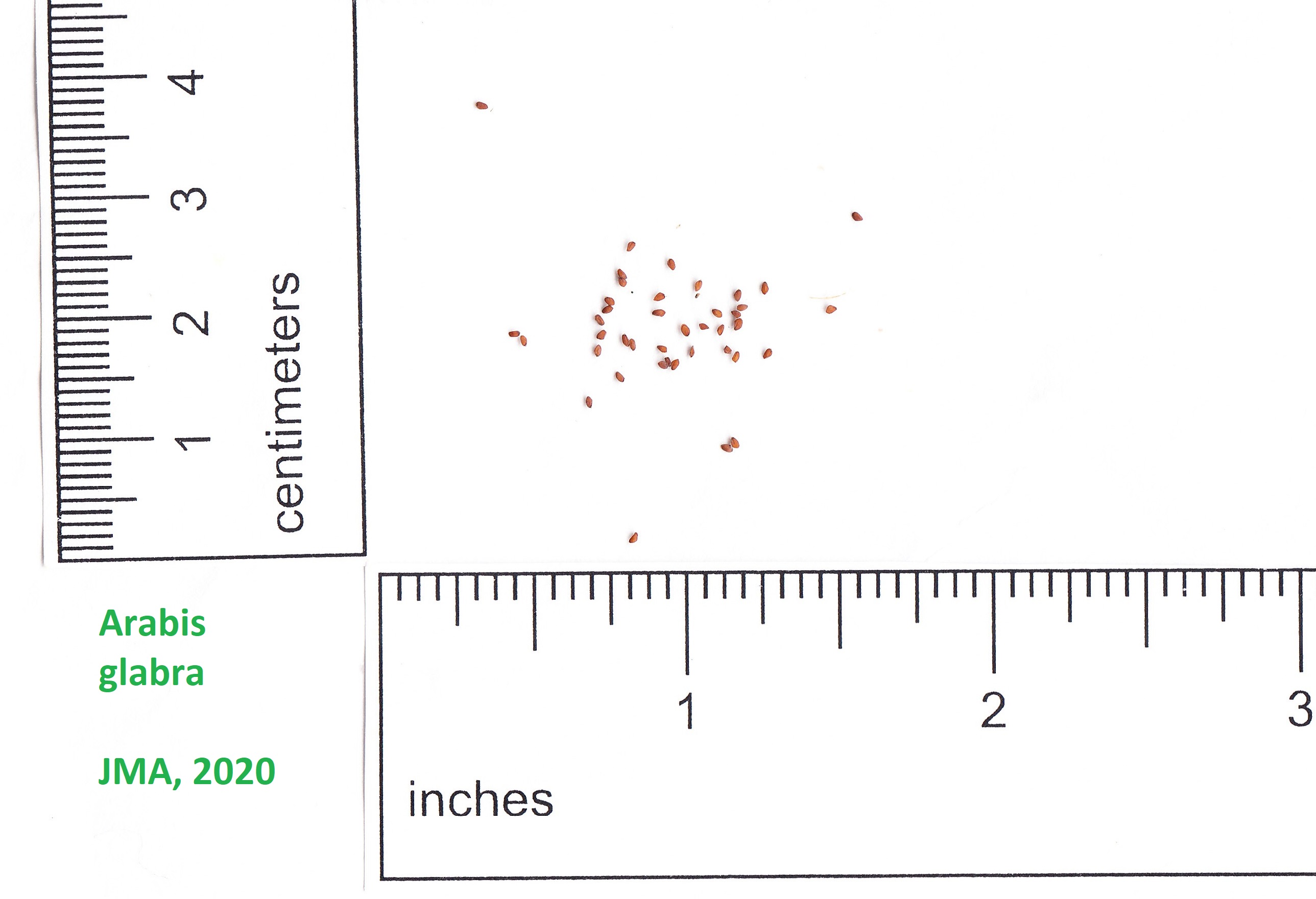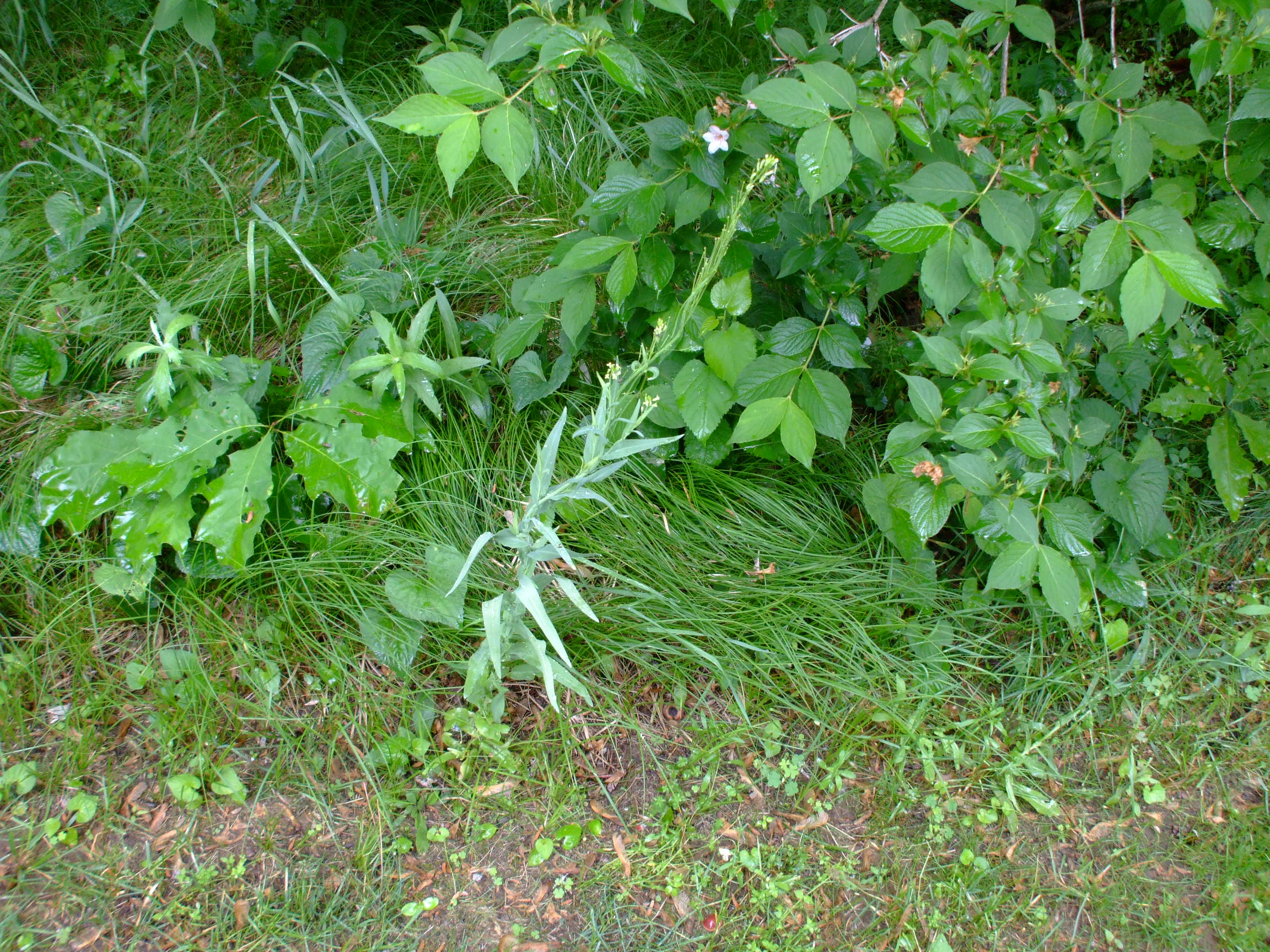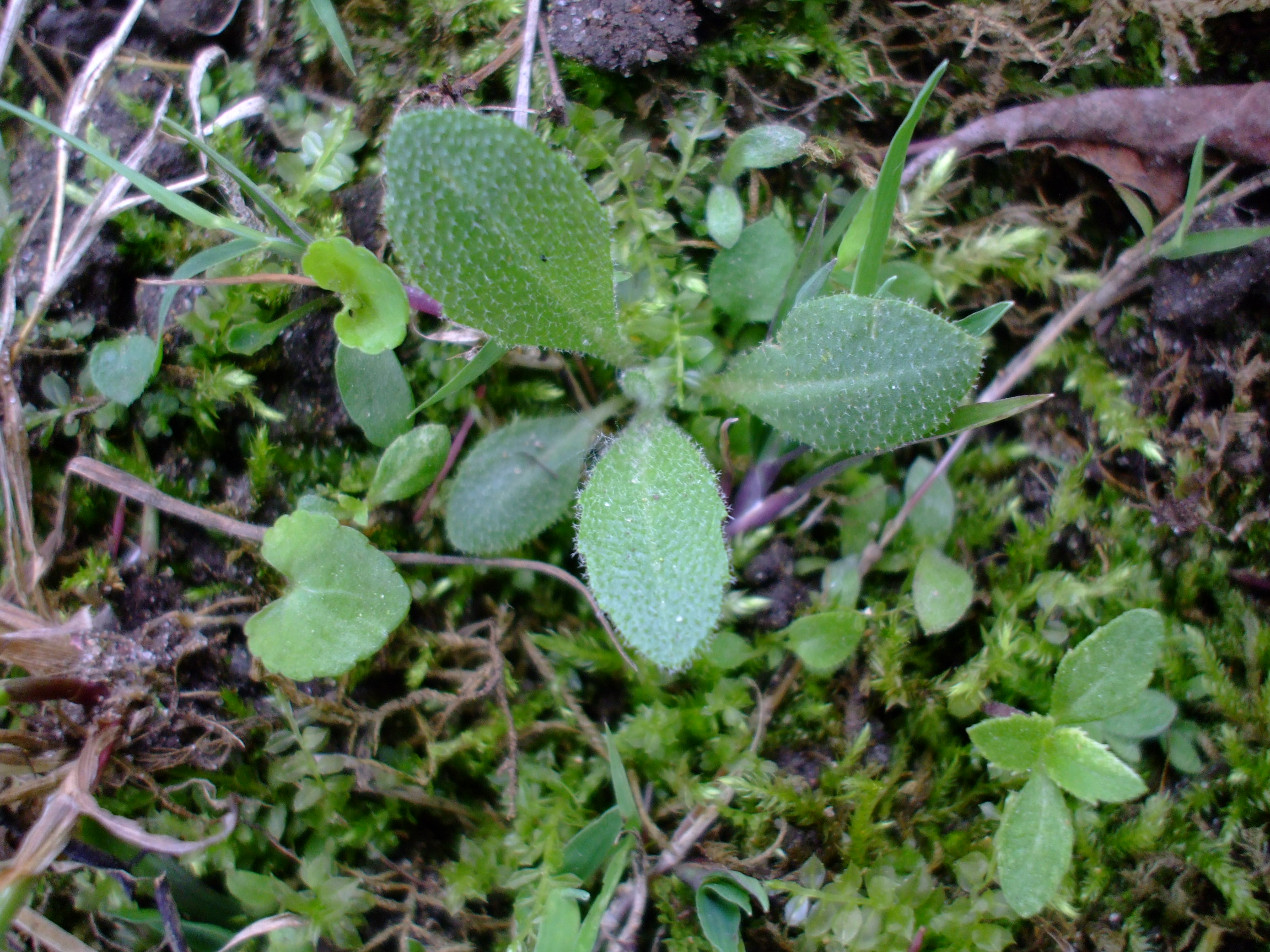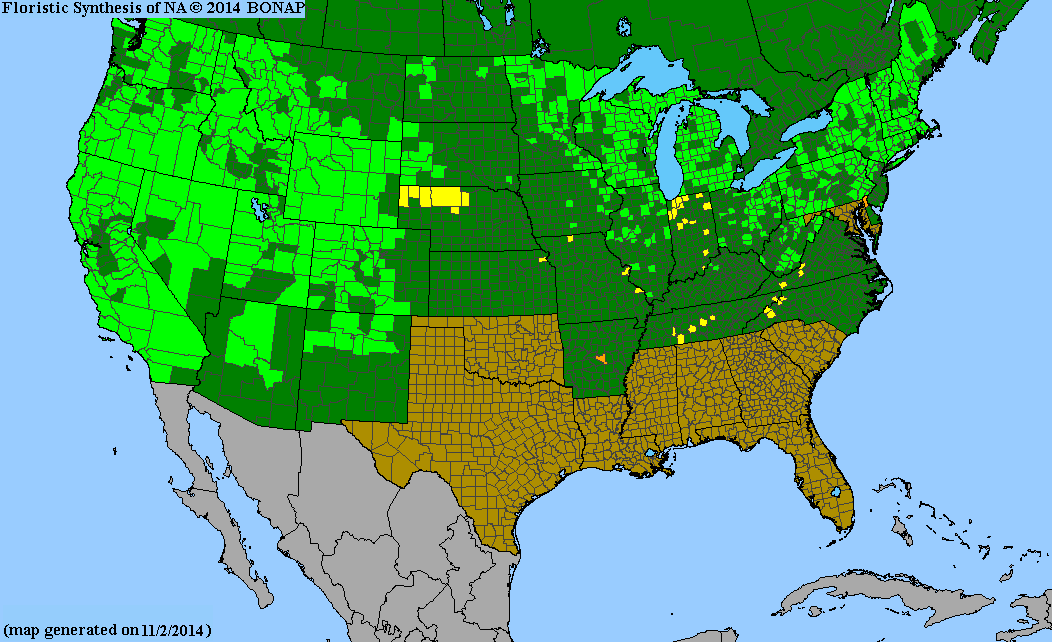Arabis glabra
(Tall Mustard)
Other pictures of this plant:
Facts About this Plant:
- Common Names: Tall Mustard, Tower Rockcress
- Synonyms: Turritis glabra
- Lifespan: Annual
- Zones: 3 - 8
- Type: Forb
- Bloom Time: May - July
- Status: Native
Arabis glabra, or Tall Mustard, is native to most of the United States, except the southeast. It is a biennial, which grows in dry fields, along railroads, roads and trails and along woodland edges. It blooms in mid to late spring with small white to cream yellow flowers. Long seed stalks follow.
The plant is fairly distinct, as far as mustards go. But it is similar looking to other species. It can be fairly easily distinguished by its almost turquoise leaves and its clasping leaves that go around the stem. The closest lookalikes can be distinguished in this way:
Arabis glabra: is biennial; has waxy stem; leaves are alternate and clasp around the stem; seed pods stand upright; is often over 3 feet tall; has almost aqua colored leaves; leaves are hairless and smooth
Arabis laevigata: is biennial; has waxy stem; leaves are alternate and clasp around the stem; seed pods droop downward; is about 18 to 24 inches tall; leaves are hairless and smooth; petals are small and barely reach past the sepals
Boechera canadensis: biennal; has hairy stems and leaves; seed pods dropp down from the stem
Boechera dentata: biennial; has hairy stems and leaves; seed pods go upwards
Boechera missouriensis: biennial; has very toothed leaves on the lower stem leaves
Boechera stricta: biennial; upper part of plant smooth with waxy covering; leaves have lobes on the bottom and do not clasp stem; fruit stands up, and usually close to the stem
More information on other species will be posted later on telling them apart. This is a difficult set of species to tell apart.
Back to The Plants.
Back to A-Z Listing.
